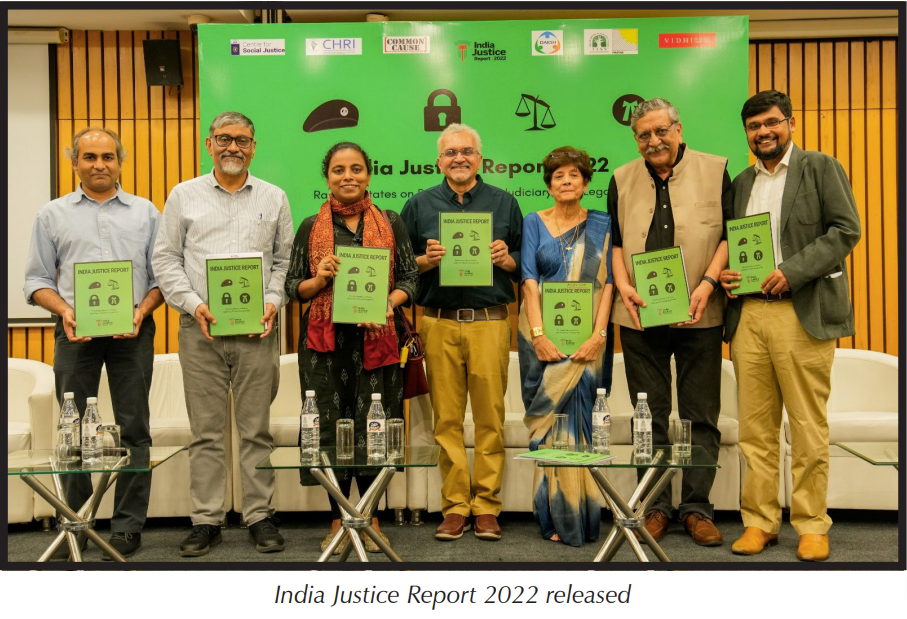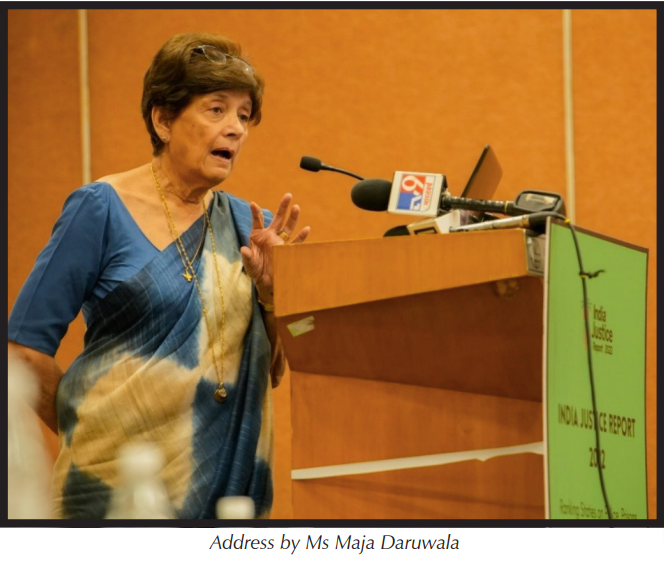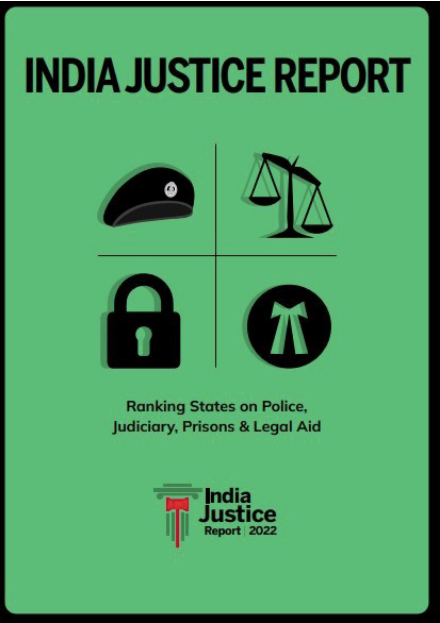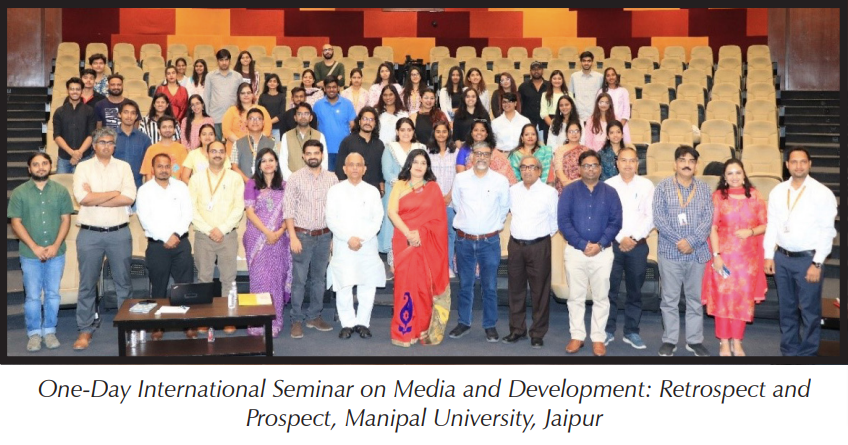Common Cause Events
India Justice Report 2022 Launch Event --- April 4, 2023
Mohd Aasif*
On April 4, 2023, the India Justice Report (IJR) 2022 was released at the India International Centre, New Delhi. IJR is a first of its kind annual report that tracks the performance of states and ranks them based on their justice delivery capacity. Initiated by Tata Trusts in 2019, the IJR is a collaborative effort of the Centre for Social Justice, Common Cause,

Commonwealth Human Rights Initiative, DAKSH, TISS-Prayas and Vidhi Centre for Legal Policy. It is supported by IJR’s data and design partner, How India Lives.
IJR brings together and studies otherwise siloed data and reveals areas that require urgent intervention from policymakers. Government data pertaining to four key parameters of justice delivery - police, judiciary, prisons and legal aid are analysed. The four are considered to be the “pillars” of justice. After a rigorous 24-month quantitative research, where the IJR team analysed each pillar through the prism of infrastructure, human resources, diversity (gender, SC/ST/OBC), budgets and workload, with the intention of comparing each state’s actual capacity for justice delivery with the target it set five years ago. For the first time the IJR report, third in the series, assesses the capacity of the 25 State Human Rights Commissions.
Introducing the report, the Chief Editor of India Justice Report, Ms Maja Daruwala points out, “As a member of the comity of nations, and more importantly as a commitment to itself, India has promised that by 2030 it will have ensured access to justice for all and built effective, accountable, and inclusive institutions at all levels. However, the official statistics compiled by and brought together in the IJR 2022 show that we have a long way to go…”.

She also spoke about making justice affordable, efficient and accessible, and the need to treat it on par with food, education, and health. Daruwala added that delivering on these goals would need a massive investment of resources.
The keynote address by Dr Bibek Debroy, Chairman of the Prime Minister’s Economic Advisory Council, was about access to justice and highlighted issues that may be addressed in the future editions of IJR.
Former Supreme Court Judge, Justice (Retd) Madan Lokur said in an online address that, “The third IJR shows that states are making a substantive improvement in terms of adding new dimensions on diversity, training, and infrastructure. Some states have dramatically improved their performance but there is a lot that needs to be done on the whole. So far as the police is concerned there does appear to be a shortage of women officers in police. Legal aid is doing better but still a lot of people need to be provided quality free legal aid, we need to increase the confidence that people have in our services”.
Common Cause Director, Dr Vipul Mudgal said, “…most of the states see training of police personnel as a mere expenditure” and highlighted that the police fails to deliver simply due to non-allocation of funds for the training of its personnel.

As per the 2022 Report, Karnataka topped the rankings amongst large and mid-sized states (population of over one crore), while Tripura was adjudged the best amongst small states (population less than one crore).
The key findings of the report are as follows :
• States are increasing budget allocation for legal aid. The report reflects that as of FY 2021-22, all states/UTs contributed more than 60 percent to their legal aid budget.
• The share of women in subordinate judiciary crossed 30 percent at the national level.
• In contrast to the findings of IJR 2020, the share of jails with video conferencing has increased to 84 percent from 60 percent.
In spite of the aforementioned improvements IJR also noted the following lacunae :
• The prison occupancy rate at 130 percent (2021) is the highest since 2010.Two-thirds of inmates are awaiting the completion of investigation or trial.
• Despite the doubling of the number of women in the police force in the last decade, women’s representation amounts to only 11.75 percent, with a high vacancy rate of 29 percent among police officers.
• More than half of the High Courts are functioning at one-fourth of their sanctioned judicial strength.
• The report points out a drastic 44 percent fall in the number of legal aid clinics, from 23,022 in 2019- 20 to 12,976 in 2020-21.
IJR 2022 has suggested immediate and systemic corrections that can lead to more efficient justice delivery, and has flagged the need to urgently fill vacancies and increase representation. To effect positive change, it has urged justice delivery to be designated as an essential service.
International Seminar on Media and Development: Retrospect and Prospect,
Manipal University, Jaipur --- May 12, 2023
Poulomi Chatterjee*

On May 12, 2023, Common Cause Director, Dr Vipul Mudgal joined Ms Lyndee Prickitt, Director of Village Square and Prof (Dr) Sanjeev Bhanawat, former head of the Centre for Mass Communication, Rajasthan University, at Manipal University, Jaipur,
in a One-Day International Seminar on Media and Development: Retrospect and Prospect. The seminar explored the role of media in relation to rural development, the importance of Sustainable Development Goals
(SDGs), and the role of alternative media in the context of rural development.
The Chief Guest, Prof (Dr) Ram Mohan Pathak, former Vice Chancellor, Nehru Gram Bharti, Prayagraj, spoke about the digital divide and highlighted the importance of alternate avenues for those who lack digital access.
Prof. Bhanawat urged young journalists to think out of the box and use resources like digital media creatively. Ms Prickitt shared her dismay about the national media’s neglect towards local issues that plague the people, while favouring trending viral news.
Dr Mudgal juxtaposed development in rural and urban India and illustrated the links between the two. Recalling the government’s proposal to the United Nations for declaring 2023 as the International Year of Millets (IYoM-2023) he emphasised India’s dilemma and shared that on one hand, expensive breakfast cereals and honeydew oats, originating in rural India, have become aspirational products in urban India; while on the other hand, rural Indians consume millets but view white rice and wheat as something more fashionable and upmarket. Dr Mudgal said that the rural India was facing a multiple crises comprising lack of investment, low productivity, agrarian distress and dismal social indicators. He said a better-informed media coverage can help policymakers by improving the quality of discourse about rural India.
In another session, Dr Mudgal introduced im4change.org, which is a repository for journalists to write on issues that affect marginalised communities in rural India. Speaking to an audience of students and faculty, Dr Mudgal emphasised that the issues of rural India are inadvertently linked with that of urban India, and a good journalist’s role, in this era of mis-information, would be to spend time with the marginalised communities at their locations, collect facts meticulously, and connect the dots without fear or favour.
The event came to a close with a question & answer session. The prime objective of the event was to bring the students to a platform where they could interact with the experts as well as to sensitise them to the issues of development and deprivation.
NEXT »



